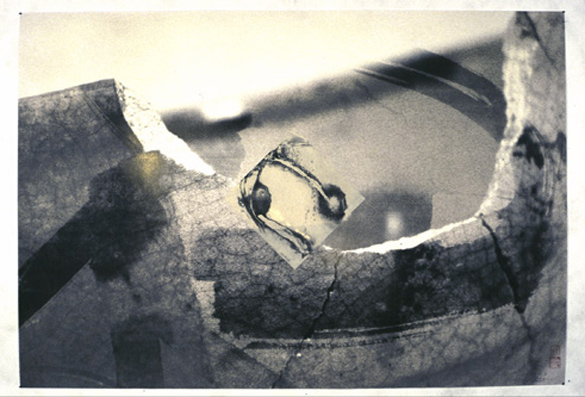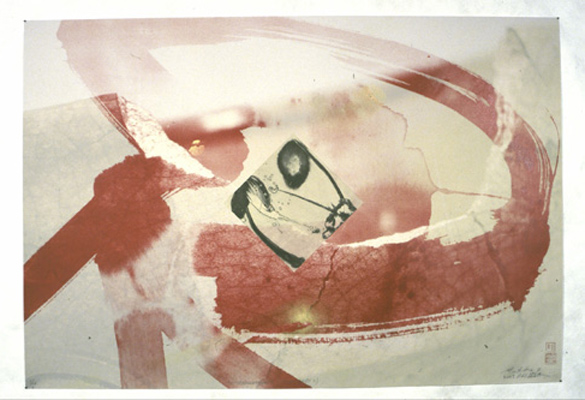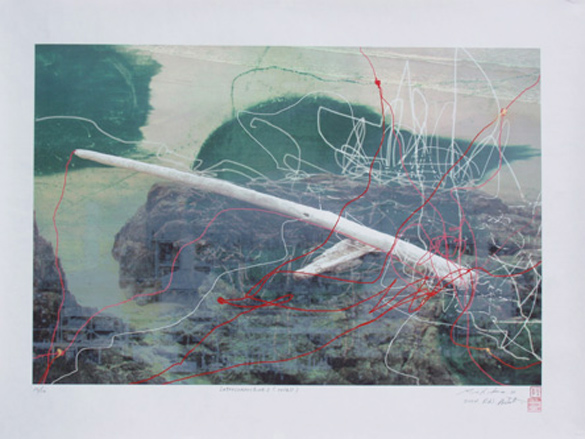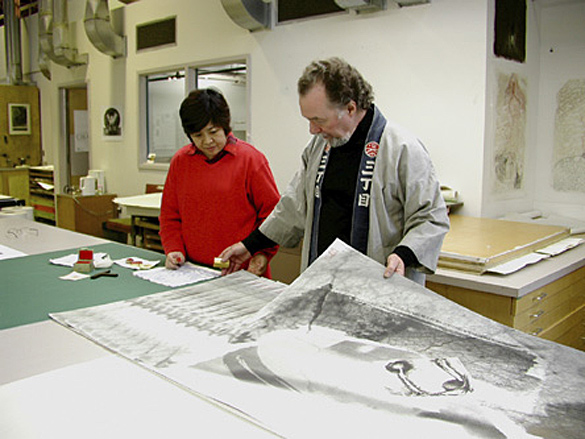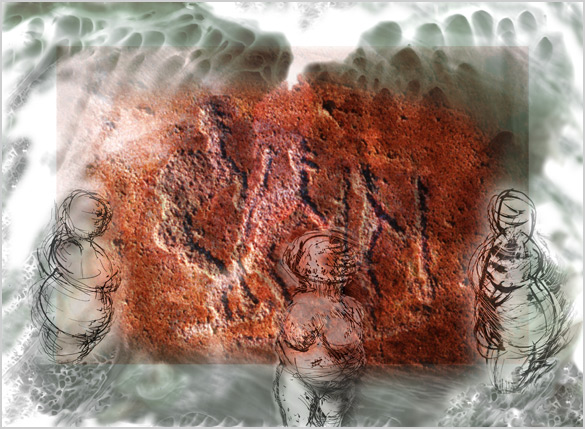Institute Printmaking Studio
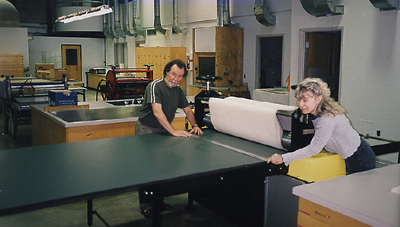
the printmaking studio at Capilano College** with Wayne Eastcott, printmaking faculty, and Bonnie Jordan, technical assistant, at the largest printing press
This has been a very hectic week for me as I return to the printmaking studio after the summer hiatus. Printmaking requires a fair amount of specialized equipment, investment and space. So, I sign up as a member of the Art Institute at Capilano College**, North Vancouver, BC. I have mentioned this before in earlier articles, but some of you may be interested to know more about this great place where I do my printmaking.
The Institute, specializing in printmaking and sculpture, each with dedicated studios, is equivalent to a graduate level fine arts program, comparable to artist-in-residencies. It is meant for artists with previous extensive education and experience, who will serve as mentors for the students in the Studio Art program. Some of us return with continuing projects and there are always some new artists, so we make an interesting mix that is wonderful for the interchange of new ideas, critiques, exposure to new techniques, support and opportunities to exhibit together.
The well-equipped printmaking studio has several printing presses for intaglio and relief, including a very large 56″ x 97″ one (in above photo), possibly the largest in western Canada. Equipment includes a nuARC exposure unit and large vacuum table, and for digital printmaking there is a 42″ large format archival inkjet printer and computer lab. There are etching and silk-screen facilities and a spray booth, all with an extensive ventilation system.
It’s pretty hard to have all this in my small home studio!
** Since this post was written, it has become Capilano University.
***Sadly, as of June 2013, this 30 year old program has been cut so links to it no longer work and have been removed.
